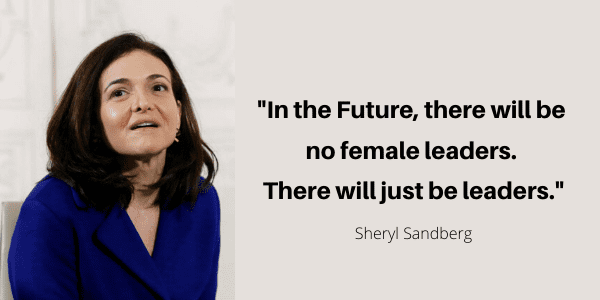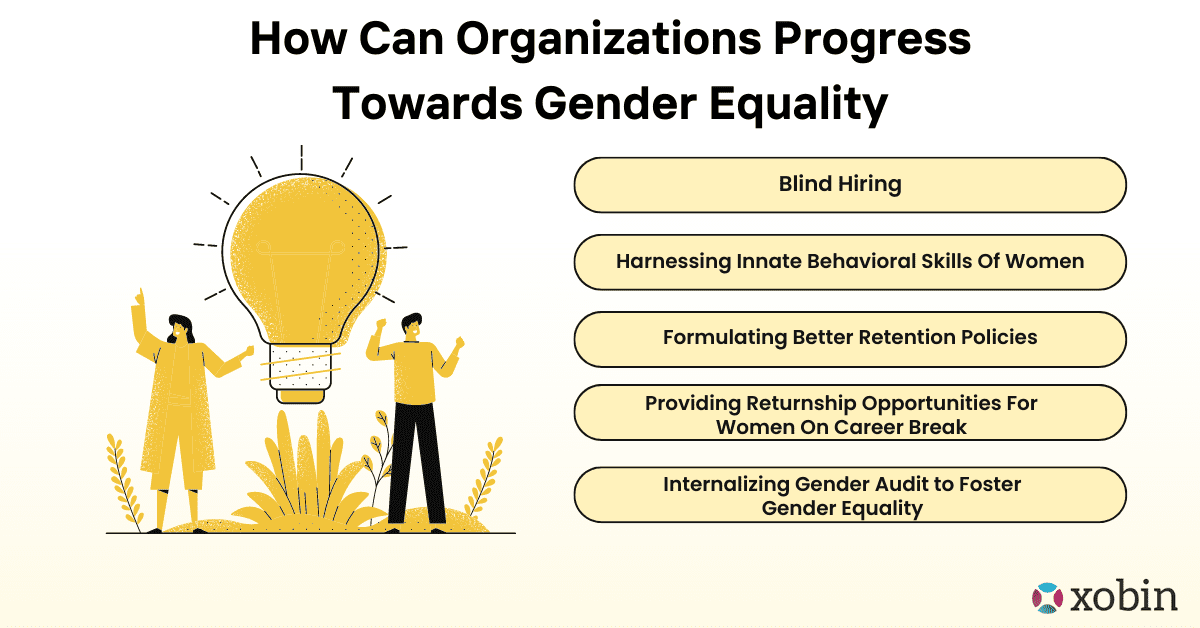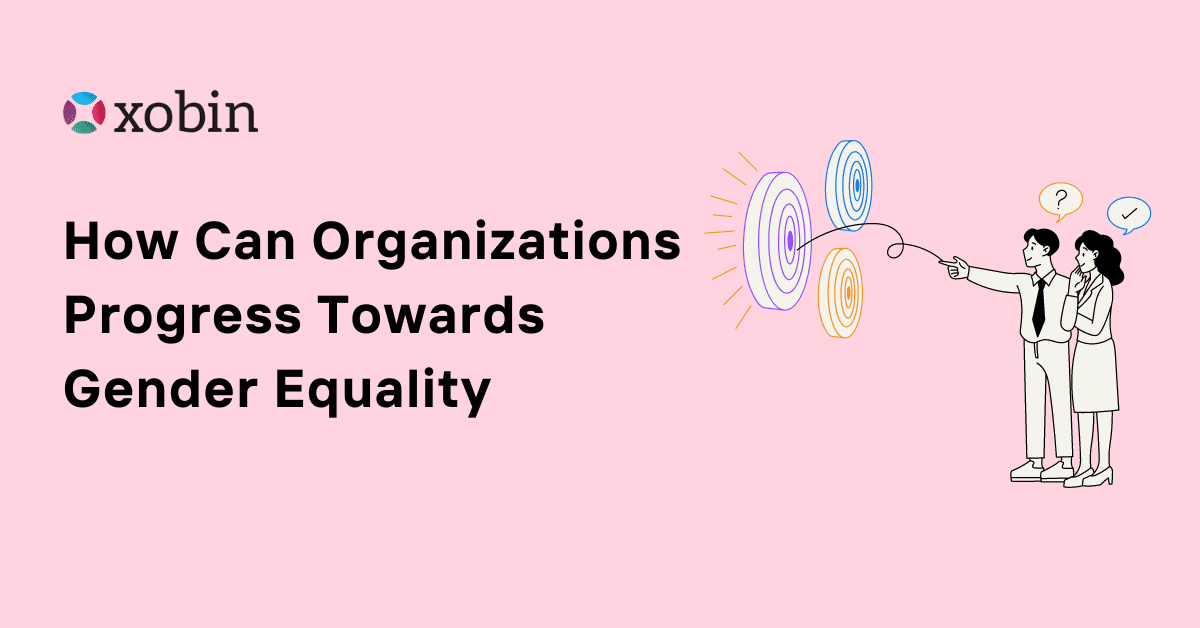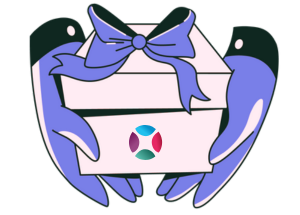In the future, there will be no female leaders. There will just be leaders ― Sheryl Sandberg

Gender Equality in the workplace is becoming one of the hottest topics of discussion at all organizations’ boardrooms.
Despite the efforts taken by a significant marginal number of organizations in improving gender equality, female workers claim that they are still facing hurdles in the recruitment process, gender pay gap, and career progression prospects. While this occupational segregation, inadequate growth prospects, and unequal wages are illegal, research made by McKinsey and Company shows that Gender-diverse organizations are 15% more likely to outperform their peers.
Table of Contents
So, how organizations can bridge the gap and extend a helping hand to women to up the game by one?
How can Organizations Progress Towards Gender Equality?

Blind Hiring
Organizations can nip the bud of gender discrimination right at the recruitment process by Blind Hiring, a practice in which elementary biasing of candidates like name, age, gender, geography are eliminated. Top organizations including Deloitte, HSBS, the BBC are already en route to Blind Hiring. Adopting AI/ machine learning-based platform for recruitment screening can close the gender gap as long as the system is not susceptible to human bias.
Creating Gender Neutral Job Descriptions
Your job description can shoo away potential candidates before even applying for a job. Yes, the choice of words in your JD has a huge impact on the applicants’ gender. Adopting a gender-neutral JD drafting tool like Textio can potentially attract more candidates under your umbrella. Adopting AI/machine learning-enabled ATS ignores gender-discriminatory attributes of an applicant’s resume.
Screening candidates only based on the skills required for the job
Objective hiring, wherein candidates are assessed only based on the technical competencies/ domain competencies by means of an Objective Talent Assessment Platform like Xobin. The assessment reports mapping the competencies of the test taker with that of the competencies required for the job and thereby promoting data-backed hiring decisions rather than an unconscious prejudice of a hiring manager.
Check-out: How Enterprises Are Leveraging Online Assessment Platforms
Harnessing Innate Behavioral Skills Of Women
Have you ever wondered why design, HR, customer service departments are buzzing with women employees?
This might sound ridiculous to some men, but yes, women are natural caregivers and have the innate behavioral traits and emotional intelligence to connect with people’s emotions.
Harnessing psychometric and behavioral assessments can depict the culture fit and behavioral fit of employees. Organizations can foster gender equality by assigning roles to women that are in line with innate behavioral traits. Key behavioral traits of women like empathy, persuasive influence, organizing skills help them to outperform men in few niche job roles.
According to Businessinsider, here are the topmost favored jobs for women employees:
- Marketing Executives
- Category Manager
- User Experience Researcher
- Business Strategy Manager
- Compensation Manager
- Corporate Psychologists
A gender equality report by Equileap shows that companies embracing equality tend to perform better. Communications, Financial, and Utility – top 3 sectors performing sectors with highest gender diversity.
Formulating Better Retention Policies
The labor force participation rate for women of working age declined from 42% in 1993-94 to 31% in 2011-12. Predictable social norms are attributed to women quitting work in India: marriage, motherhood, vexed gender relations and biases, and patriarchy. Retention of women in mid-career levels is needed to be at parity with that of men.
5 steps to retain women in the workforce and maintain gender equality
Here are 5 steps if taken at the right time, can retain women in the workforce and maintain gender equality.
Enabling Flexibility In The Workforce
Post marriage or motherhood, most women are entangled with a lot more personal commitments and work might take a backseat in this regard. Organizations shall, in such cases could offer flexible work options. A study made by students of Boston University found that 90% of people believe that having access to flexible work options contributes to their overall quality of life to a “moderate” or “great extent.”
Create collaborative employee groups and Enforce Strict Harassment Policies
Organizations should not understate the importance of creating and promoting employee network groups. This creates a community for employees who are going through similar experiences (both work and personal) to share best practices, hardships, and advice.
Strict Harassment Policies formulated need to be communicated to women and young women who enter the workforce need to be trained to raise their voices and report to senior management.
Create fluidity throughout the organization
In order to retain and recruit women, organizations should focus on offering individuals the opportunities to move throughout the company and into positions that leverage their skills, enable development and offer new opportunities which interest and inspire them.
The Harvard Business Review says 17% of women leave the “fast lane” of their career because work is not enjoyable or satisfying. To avoid losing this talent, organizations should give women the opportunity (and support) to switch their focus areas and, as I like to say, “feed their soul.”
Providing Returnship Opportunities For Women On Career Break
Providing returnship opportunities and policies for women on a career break (owing to personal commitments) is always a win situation for the company. It takes relatively a lesser investment for organizations to hire and train a woman who is already exposed to the corporate culture.
Women on their return to the workforce after a career break would in turn bring time management skills, higher productivity, different perspectives, and more inclusion to the workplace.
Organizations such as Tata Steel, RBS, Genpact, and Amazon have programs to provide a second-career opportunity to women and ensure that their return to work is smooth.
The right program could attract this talented pool of women back into the workplace, helping to build more gender diversity and female role models. – Tania Chatterjee, director of HR & diversity lead at RBS
The Tata Group has been running a program called Tata Second Careers Inspiring Possibilities (SCIP) for returning women.
The SCIP policy includes flexible work hours and work from home to help maintain work-life balance post their return to work after a career break.
Tata Motors chief HR officer, Gajendra Chandel
Internalizing Gender Audit to Foster Gender Equality
Often organizations are found merely doing lip service by announcing policies for gender equality. To ensure that the policies are implemented on the ground, yearly a gender audit is a must.
So, what really is a Gender Audit? It is a yearly audit of employee payroll policies, performance, time off, the role of the job, career trajectory. The insights from such audits often provide hard facts about the gap between policies and their effect.
According to the White House, full-time working women earn just 78 cents for every dollar a man earns, on average. And many women feel that they are not paid on par with men doing the same work. Many companies do not feel comfortable breaking open the wall of the gender pay gap.
A case in point is Salesforce, a leading Customer Relationship Management Software. The company in 2018, decided to make its gender audit public. Mark Benioff, CEO showed an ideal example of how organizations can immensely thrive on gender diversity. Mark wholeheartedly accepted the findings that a gender wage gap in comparable roles existed at his company, and he put a plan – with $3 million in funding in place to resolve it.
This initiative has won all the hearts of the company’s women employees.
Also, check out how Times Internet achieved 100% gender pay equality.
After taking all the required initiatives for inclusion at the workplace, here is how organizations can enhance productivity by
- Providing a sense of accountability and ownership to women.
- Entrusting additional responsibilities that ultimately reflect on career progression
- Assessing training needs for Succession Planning, chalking-out a career trajectory and create a pipeline of women leaders
On the parallel track, women returnship organizations like JobsforHer, HerSecondInnings, AVTAR I-WIN provide training, networking, and job opportunities for women who want to return to the workforce.






